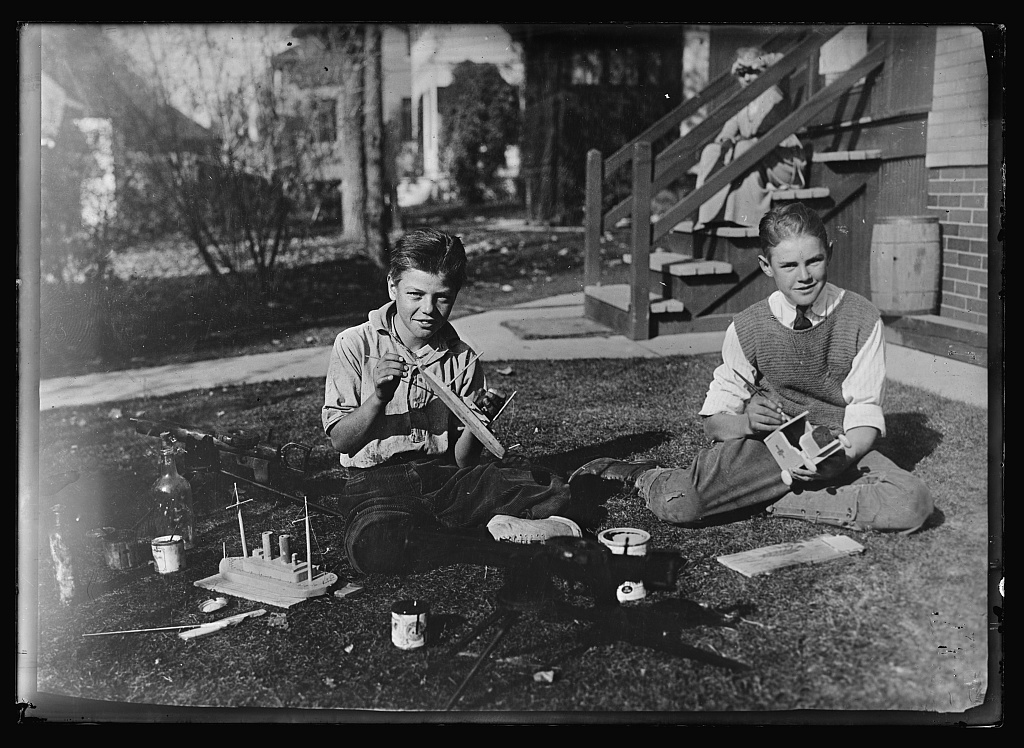This photo, called “The Back Yard Workshop, while School was closed for Influenza,” is from the Mountain Division, Denver, Colorado and was taken on May 24, 1919.
The past speaks to us when we have ears to listen. The current COVID-19 crisis is mirrored by the Influenza Pandemic that began just over one hundred years ago. Often called the Spanish Flu, the two years of the pandemic profoundly impacted daily life throughout the United States and saw nearly 50 million people die worldwide. Although the end of World War I (then called the Great War) overshadowed the memory of the pandemic, echoes of the outbreak still ring through the historical record.
The Spanish Flu hit Colorado late and hard. As with COVID-19, authorities began shutting down public spaces, schools, and places of business when they realized that the virus was wreaking devastation throughout the state. Hospitals were overflowing with patients and the economy shuddered under the strain of closures. Communities and individuals responded differently to the challenges the influenza posed. Some areas of Colorado—most notably Gunnison—isolated themselves from the rest of the world and cut themselves off from all outside contact after realizing that there were no cases in their community. Others blamed ethnic groups for bringing the disease to the country. Perhaps the most egregious example was from Denver, where a rumor spread that the Italian-American community was to blame for the arrival of the scourge of the influenza. Still others grappled with trauma and mental strain as they lost their livelihood or, worst of all, their loved ones.
As we reflect on the past and consider our present situation, we have much to learn. Katherine Ann Porter was a reporter for The Rocky Mountain News in Denver during the 1918 Spanish Flu outbreak. She contracted the virus and nearly died. Much later in her life she wrote about the experience in the short fiction book “Pale Horse, Pale Rider” (1936). She writes of the loneliness she felt and of the disorientation and sadness of that time. The sobering glimpse Porter gives us into the influenza pandemic of 1918-1919 can help us as we imagine our own responses to the coronavirus pandemic and chart our course today.
But history can also give us lessons that are less grim than Porter’s apocalyptic tale. The photo below is from the Library of Congress website. It shows two boys in Denver creating their own model workshop in their yard during quarantine in 1919. This sort of creativity is exploding throughout our community as we find ourselves with more time in our homes. Perhaps we can learn from these young chaps. Maybe we too can find a useful diversion or new ways to encourage and support our neighbors. Maybe we can turn this strange time into something positive.
Sources:
Davis, David A. “The Forgotten Apocalypse: Katherine Anne Porter’s “Pale Horse, Pale Rider,” Traumatic Memory, and the Influenza Pandemic of 1918.” The Southern Literary Journal
Vol. 43, No. 2 (SPRING 2011), pp. 55-74.
Honigsbaum, Mark. “Spanish influenza redux: revisiting the mother of all pandemics.” The Lancet 391.10139 (2018): 2492-2495.
Murray, Christopher J.L., et al. “Estimation of potential global pandemic influenza mortality on the basis of vital registry data from the 1918–20 pandemic: a quantitative analysis.” The Lancet 368.9554 (2006): 2211-2218.
Schoch-Spana, Monica. “The 1918–1920 Influenza Pandemic Escape Community Digital Document Archive.” Bulletin of the History of Medicine 81.4 (2007): 863-865.
The Back Yard Workshop, while School was closed for Influenza. Mountain Division, Denver, Colo. 5/24. Photograph. Retrieved from the Library of Congress, <www.loc.gov/item/2017668474/>.

